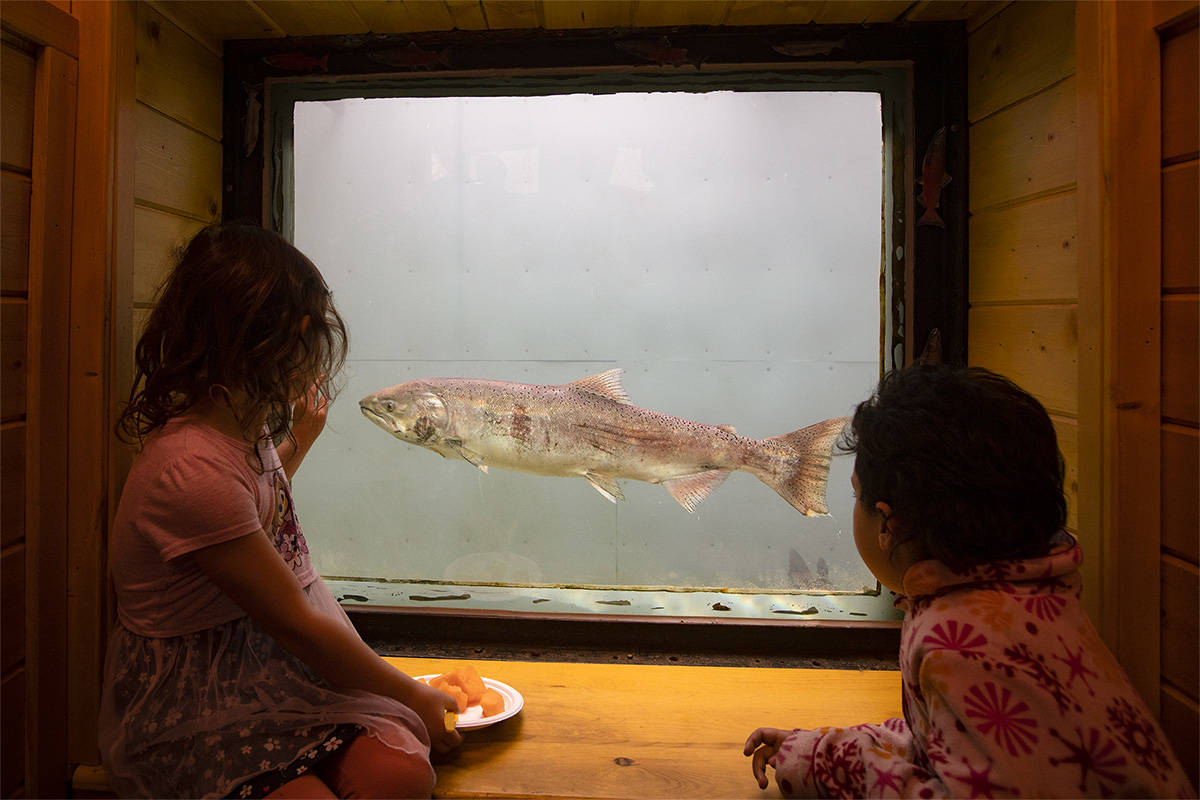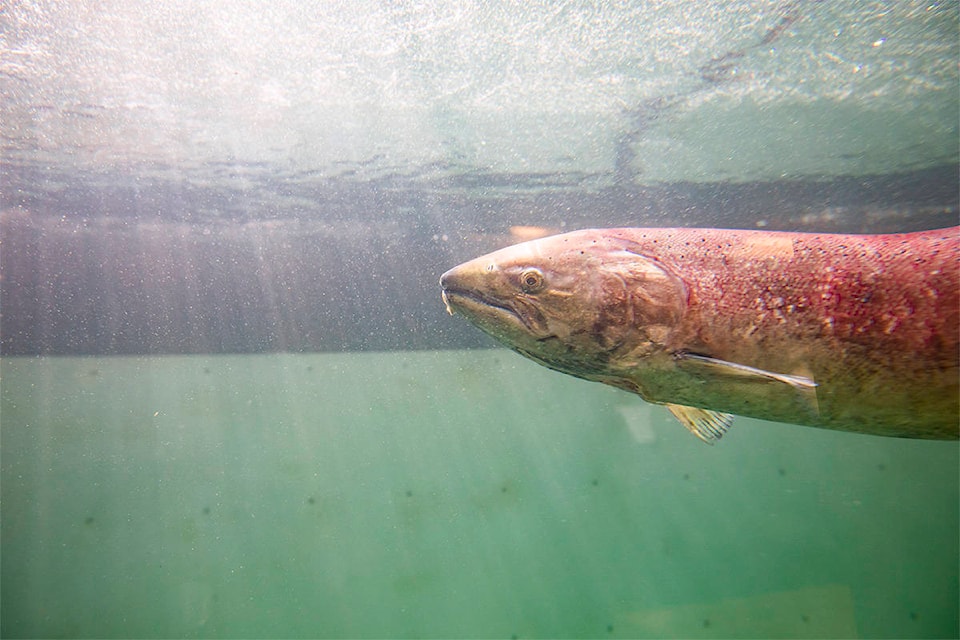As a four-year study on Chinook salmon in the Yukon wraps up, the researcher says he is hoping it might raise questions about how fish are navigating the Whitehorse fish ladder.
William Twardek, a PhD candidate from Carleton University, has spent four years studying how the Upper Yukon River Chinook salmon manoeuvered around the Whitehorse hydro dam.
“The objective of this wasn’t so much to necessarily find solutions or change the design of the fish ladder, its real focus was to provide an evaluation as to how well the fish ladder is working,” Twardek said.
The results of Twardek’s study haven’t been published yet, but he is sharing preliminary results with the community.
Chinook are considered strong swimmers, but the salmon in the Yukon River already work very hard to get to the fish ladder. Entering the river in Alaska, the salmon travel nearly 3,000 kilometres to get to their home spawning sites, making it one of the longest inland salmon migrations on earth.
In order to make it upstream to spawn past Whitehorse, the fish have one last obstacle in their way: the fish ladder that circumvents the Whitehorse hydroelectricity plant.
The salmon regularly traverse the 400-metre wooden structure to gain the 15-metre height, but it isn’t well known what percentage of the Chinook are successful.
The study took place over four years and used telemetry — radio transmitters embedded in captured fish — to track the salmon as they approached the fish ladder and carried on with their journey to reproduce.
Researchers captured and tagged fish at the ladder and upstream below the dam, noting their sex, size and origin. As a result, the researchers were able to determine how many of the sampled fish managed to surmount the ladder and where they eventually ended up spawning. They were also able to track how long it took the salmon to navigate the ladder and whether they gave up before completion.
The results show that only about a third of tagged fish who attempted the ladder made it through.
“I expected there to be a bit higher passage just based on research that’s been done elsewhere, using similar methods,” Twardek said, adding that different populations are difficult to compare because they have very different migrations.
Twardek notes that there are shortcomings to the preliminary data — only 171 tagged salmon made it through the ladder over the four years and tagging itself can influence fish behaviour. That’s also a relatively small sample size to draw solid conclusions from.
In addition, many factors — including weather — can influence trends in fish behaviour and abundance from year to year. During the study year in 2019 water temperatures were higher than usual. In 2020 water levels were higher than usual.
Still, the study suggests that the ladder isn’t working well for a large number of fish.
Only part of the study was focused on the fish ladder success rate – most of the data tracks where the fish end up after the dam. Still, Twardek’s paper was able to determine what portions of the ladder the fish struggle with, and suggest possible design tweaks. Two challenges identified were attracting fish to the ladder and delays for fish passage at the viewing chamber, which has a manually controlled gate.
Twardek worked with a number of Yukon First Nations in the study, including Carcross/Tagish First Nation, Ta’an Kwäch’än Council, Kwanlin Dün First Nation and Champagne and Aishihik First Nations.
The Yukon Fish and Game Association and Yukon Energy, including staff from the fish ladder and hatchery, also collaborated on the research.
“There’s a lot of people caring about the Yukon River Chinook salmon, both in Alaska and Yukon. There are such close cultural ties to the species. I think that is really special and unique to this population,” Twardek said.
“I’m hoping with all of this increased awareness around the project that hopefully, it’ll nudge people in the right direction to start thinking about making some changes to Chinook salmon management and conservation. Perhaps there could be some things implemented at the fish ladder to get more salmon upstream,” he added.
As part of the study, the research also looked at what happens to salmon who fail to make it upstream past the fish ladder. Twardek said many of the fish still “give it their best shot” and end up partially spawning in suitable habitat below the dam, but they aren’t as successful as when they complete their biological journeys.
The dam was constructed in 1958, but Chinook runs started their rapid decline much earlier.
While the historical record — including contributions from First Nations traditional knowledge — indicates that families used to harvest thousands of fish every year, the number of Chinook passing through the fish ladder has declined into merely hundreds. Overfishing associated with the population increases that followed the Klondike Gold Rush and commerical fishing in the early 20th century are thought to be major factors in the decline of the species.
So although the fish ladder isn’t largely to blame for the declines, it’s clear the Chinook need all the help they can get.
In 2019 and 2020, salmon returns to Whitehorse were so low that some First Nations governments advised their citizens to stop harvesting salmon altogether.
Only 200 fish total made it through the fish ladder in 2020.
“It’s sort of emotional that these salmon made it all the way upstream from the ocean and were so close, but then didn’t get to reproduce like they should have. Just thinking about anything we could do to help get them to their spawning sites so that they do reproduce would be useful,” Twardek said.
The evidence from the research — including partial spawns by the fish who were stranded after the majority of their epic journey — tells a story of lost potential.
“It just paints the picture as to what the real consequences of not making it upstream are,” he said.
Contact Haley Ritchie at haley.ritchie@yukon-news.com

